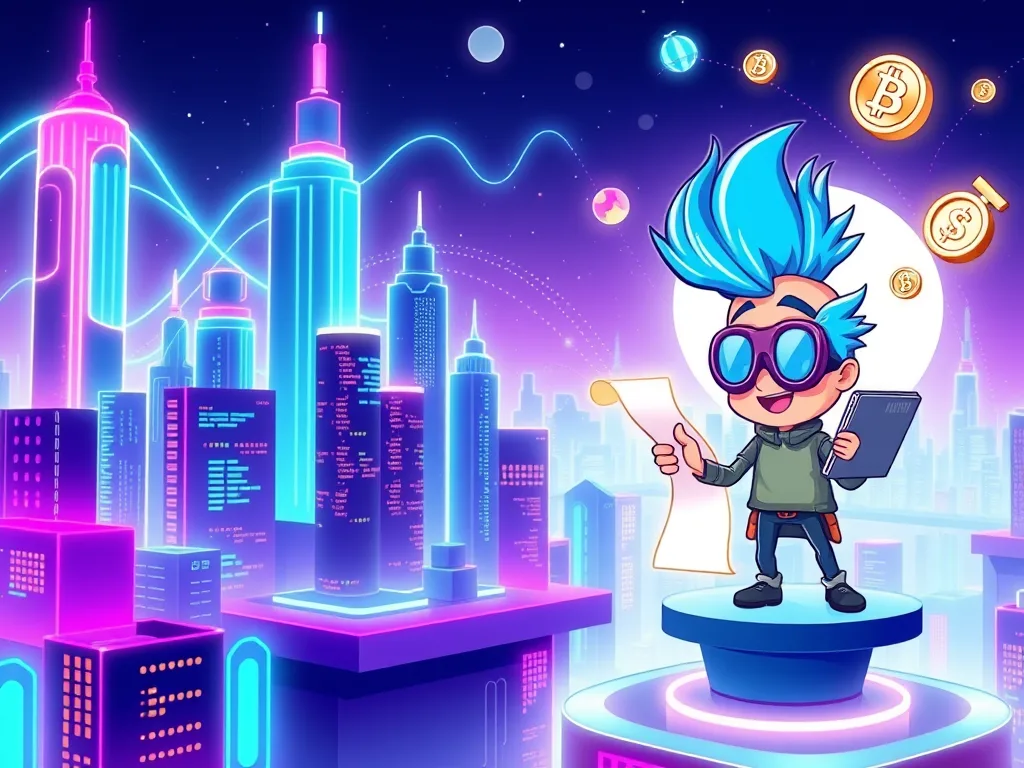Blockchain technology isn’t just for cryptocurrencies anymore—it’s revolutionizing full stack development in ways you never imagined. From decentralized apps (dApps) to secure data management, integrating blockchain into full stack projects is the hot trend of 2025 that developers can’t afford to overlook. Whether you’re building scalable web apps or exploring cutting-edge solutions, blockchain offers unparalleled security, transparency, and innovation. Want to supercharge your full stack skills? Check out my recent post on optimizing performance in Next.js 14 for more tips, then dive into this blockchain guide!
In this article, we’ll explore why blockchain integration in full stack projects is taking off, how to implement it, and some real-world code examples to get you started. Let’s unlock the future of development together!
Why Blockchain Matters for Full Stack Developers
Blockchain’s decentralized nature eliminates middlemen, making it perfect for applications requiring trust and immutability—like finance, supply chain, or even voting systems. For full stack developers, this means new opportunities to build front-end interfaces and back-end logic that interact with blockchain networks. According to CoinDesk, blockchain adoption in enterprise solutions grew by 35% in 2024 alone, and that momentum is carrying into 2025.
Key benefits of blockchain integration in full stack projects include:
- Security: Data stored on a blockchain is tamper-proof.
- Transparency: Every transaction is traceable and auditable.
- Scalability: Smart contracts automate processes, reducing server load.
Ready to see it in action? Let’s break it down with some practical examples.
Getting Started: Tools for Blockchain Integration
To integrate blockchain into your full stack projects, you’ll need a few essentials:
- Ethereum: A popular blockchain platform for dApps and smart contracts.
- Solidity: The language for writing smart contracts.
- Web3.js: A JavaScript library to connect your front end to the blockchain.
- Node.js: For back-end logic and API handling.
Here’s how you can set up a full stack project with blockchain integration.
Step 1: Writing a Smart Contract with Solidity
Smart contracts are self-executing agreements stored on the blockchain. Below is a simple example of a Solidity contract for a voting system:
// SPDX-License-Identifier: MIT
pragma solidity ^0.8.0;
contract SimpleVoting {
mapping(address => uint) public votes;
uint public totalVotes;
function vote(uint candidateId) public {
votes[msg.sender] = candidateId;
totalVotes += 1;
}
function getVote(address voter) public view returns (uint) {
return votes[voter];
}
}This contract lets users vote for a candidate and tracks the total votes. Deploy it to an Ethereum testnet like Ropsten using tools like Remix.
Step 2: Connecting the Front End with Web3.js
Now, let’s build a front-end interface using React and Web3.js to interact with the smart contract. First, install Web3.js:
npm install web3Here’s a basic React component to cast and display votes:
import React, { useState, useEffect } from 'react';
import Web3 from 'web3';
const VotingApp = () => {
const [web3, setWeb3] = useState(null);
const [contract, setContract] = useState(null);
const [account, setAccount] = useState('');
const [voteCount, setVoteCount] = useState(0);
useEffect(() => {
const init = async () => {
const web3Instance = new Web3(window.ethereum);
await window.ethereum.enable();
const accounts = await web3Instance.eth.getAccounts();
setWeb3(web3Instance);
setAccount(accounts[0]);
const contractAddress = 'YOUR_CONTRACT_ADDRESS'; // Replace with your deployed address
const abi = [/* Your contract ABI here from Remix */];
const contractInstance = new web3Instance.eth.Contract(abi, contractAddress);
setContract(contractInstance);
const total = await contractInstance.methods.totalVotes().call();
setVoteCount(total);
};
init();
}, []);
const castVote = async (candidateId) => {
await contract.methods.vote(candidateId).send({ from: account });
const updatedVotes = await contract.methods.totalVotes().call();
setVoteCount(updatedVotes);
};
return (
<div>
<h1>Blockchain Voting</h1>
<p>Total Votes: {voteCount}</p>
<button onClick={() => castVote(1)}>Vote for Candidate 1</button>
</div>
);
};
export default VotingApp;Replace YOUR_CONTRACT_ADDRESS and the ABI with your deployed contract details. This code connects your React app to Ethereum and lets users vote via the blockchain.
Step 3: Back-End Integration with Node.js
For the back end, use Node.js to fetch blockchain data or handle off-chain logic. Here’s an example using Express and Web3.js:
const express = require('express');
const Web3 = require('web3');
const app = express();
const web3 = new Web3('https://ropsten.infura.io/v3/YOUR_INFURA_KEY'); // Use your Infura key
const contractAddress = 'YOUR_CONTRACT_ADDRESS';
const abi = [/* Your contract ABI */];
const contract = new web3.eth.Contract(abi, contractAddress);
app.get('/votes', async (req, res) => {
const totalVotes = await contract.methods.totalVotes().call();
res.json({ totalVotes });
});
app.listen(3000, () => console.log('Server running on port 3000'));This API endpoint retrieves the total votes from the blockchain, which your front end can consume.
Real-World Use Cases
Blockchain integration in full stack projects isn’t just theoretical. Companies like IBM use it for supply chain transparency, while DeFi platforms like Uniswap rely on it for decentralized trading. Imagine building a full stack app where users trade digital assets securely—or even a social platform where content ownership is verified on-chain!
Challenges to Watch Out For
- Cost: Ethereum gas fees can add up—consider layer-2 solutions like Polygon.
- Complexity: Blockchain adds a learning curve to full stack development.
- Scalability: Ensure your app handles blockchain latency effectively.
Ready to Build?
Blockchain integration in full stack projects is more than a buzzword—it’s a skill that sets you apart in 2025. Start small with a testnet, experiment with smart contracts, and watch your apps transform into decentralized powerhouses. For more developer inspiration, check out Ethereum’s official docs or dive into my Next.js performance guide linked above.
What’s your next blockchain project idea? Drop it in the comments—I’d love to hear!
